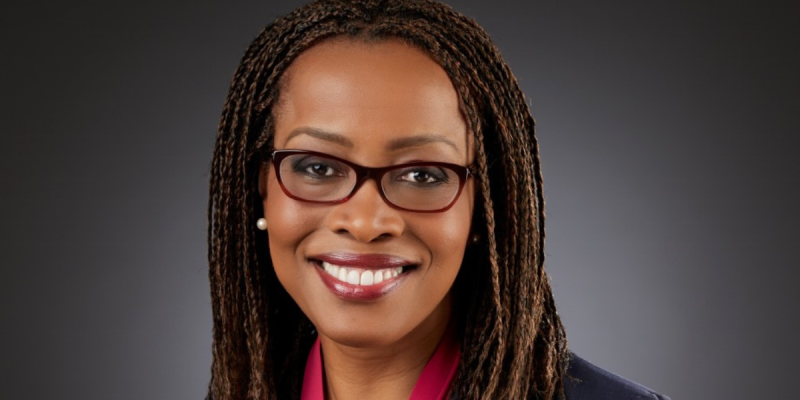The Pritzker Architecture Prize — the highest honor in the field — has been awarded to British architect and urban planner David Alan Chipperfield, hailed on Tuesday for “a commitment to an architecture of understated but transformative civic presence.”
Organizers called Chipperfield’s work — more than 100 projects over four decades ranging from cultural, civic and academic buildings to urban planning to residences, and including a recent addition to Berlin’s famed Museum Island complex — “subtle yet powerful, subdued yet elegant.”
“He is a prolific architect who is radical in his restraint,” they said in a statement announcing the 2023 winner, “demonstrating his reverence for history and culture while honoring the preexisting built and natural environments.” They cited his “timeless modern design that confronts climate urgencies, transforms social relationships and reinvigorates cities.”
And they noted his commitment to society and the environment over chasing trends.
“He is assured without hubris, consistently avoiding trendiness to confront and sustain the connections between tradition and innovation, serving history and humanity,” said Tom Pritzker, chairman of the Hyatt Foundation, which sponsors the award.
Based in London, with additional offices in four other countries, Chipperfield has worked across Asia and Europe and also in U.S. cities like Davenport, Iowa, and Anchorage, Alaska.
In 2019, the city of Berlin introduced the James Simon Gallery, a new gateway designed by Chipperfield to the Museum Island complex and seen as a key moment in efforts to renovate the five-museum site that houses treasures such as Babylon’s Ishtar Gate and a famed bust of Egyptian Queen Nefertiti.
Pritzker Prize organizers hailed the design, including its “commanding, though discreet, colonnades” and the way it “enables generous views from within and beyond, even through to adjacent buildings and the surrounding urban landscape.”
Ten years earlier, in 2009, Chipperfield completed a major restoration and reinvention of the Neues Museum at the complex, a building constructed in the mid-19th century and largely destroyed during World War II.
In an interview, Chipperfield, 69, recalled the project as an intense experience.
“It was not only a museum, it was part of the fabric, the heritage of the city in its good and worst ways,” he told The Associated Press on Monday, speaking from Berlin. “It was a wonderful 19th-century building, but substantially destroyed by the traumatic events of the Second World War and then neglected because of the postwar division of the city.
“So it carried, this poor building, an enormous amount of history with it. And therefore when we rebuilt it, we were also very engaged in its emotive potential. It wasn’t only an intellectual thing, it was what it meant for Berlin, what it meant for Germany.”
Chipperfield noted that museum expansions comprised some of his most rewarding projects.
“Our museum projects have always allowed us to play with the physical stuff of architecture — space, volume, material, light. But they’ve also allowed us to play with societal meaningfulness,” he said. “And how does a cultural institution engage with the city it’s in, if that’s St. Louis or Anchorage or Davenport, Iowa.”
He also spoke of the tension between views of architecture as an art and as a service.
“I think architects are a bit confused as to whether they’re artists or a service industry. In a way, we’re much more the latter,” he said. “Our relationship is much more entangled in society, and so it should be. And that gives us a special role … but it comes at a price. It comes at a price that we have to engage in a meaningful manner.”
He mused that as an architect, he feels an obligation not only to the “visible clients” — the ones who make the commissions and pay the bills — but to the “invisible” clients, “the people who are going to work in that building, live in that building, visit that building, or even pass that building every day on their way to their work. We have to, in a way, in the back of our heads, represent that client as much as the one that pays our bills.”
In their statement, Pritzker organizers also cited Chipperfield’s restoration last year of the 16th-century Procuratie Vecchie in Venice, Italy, which “redefined the civic ability of this building within the heart of the city to allow general access for the first time.”
In Asia, it cited his headquarters for Amorepacific in Seoul, which it said harmonized “the individual and the collective, the private and the public, work and respite,” and the Inagawa Cemetery Chapel and Visitor Center in Hyogo, Japan, where “the physical and spiritual coexist, with places of solitude and gathering, for peace and seeking.”
“We do not see an instantly recognizable David Chipperfield building in different cities,” the jury said in its citation, “but different David Chipperfield buildings designed specifically for each circumstance.”
Chipperfield was born in London and raised on a farm in Devon, in southwest England, where he has said a collection of barns and outbuildings shaped his early impressions of architecture.
He founded David Chipperfield Architects in London in 1985, which later added offices in Berlin, Shanghai, Milan and Santiago de Compostela in Spain.
Chipperfield is the 52nd laureate of the Pritzker Architecture Prize, established in 1979 by the late entrepreneur Jay A. Pritzker and his wife, Cindy. Winners receive a $100,000 grant and a bronze medallion.























